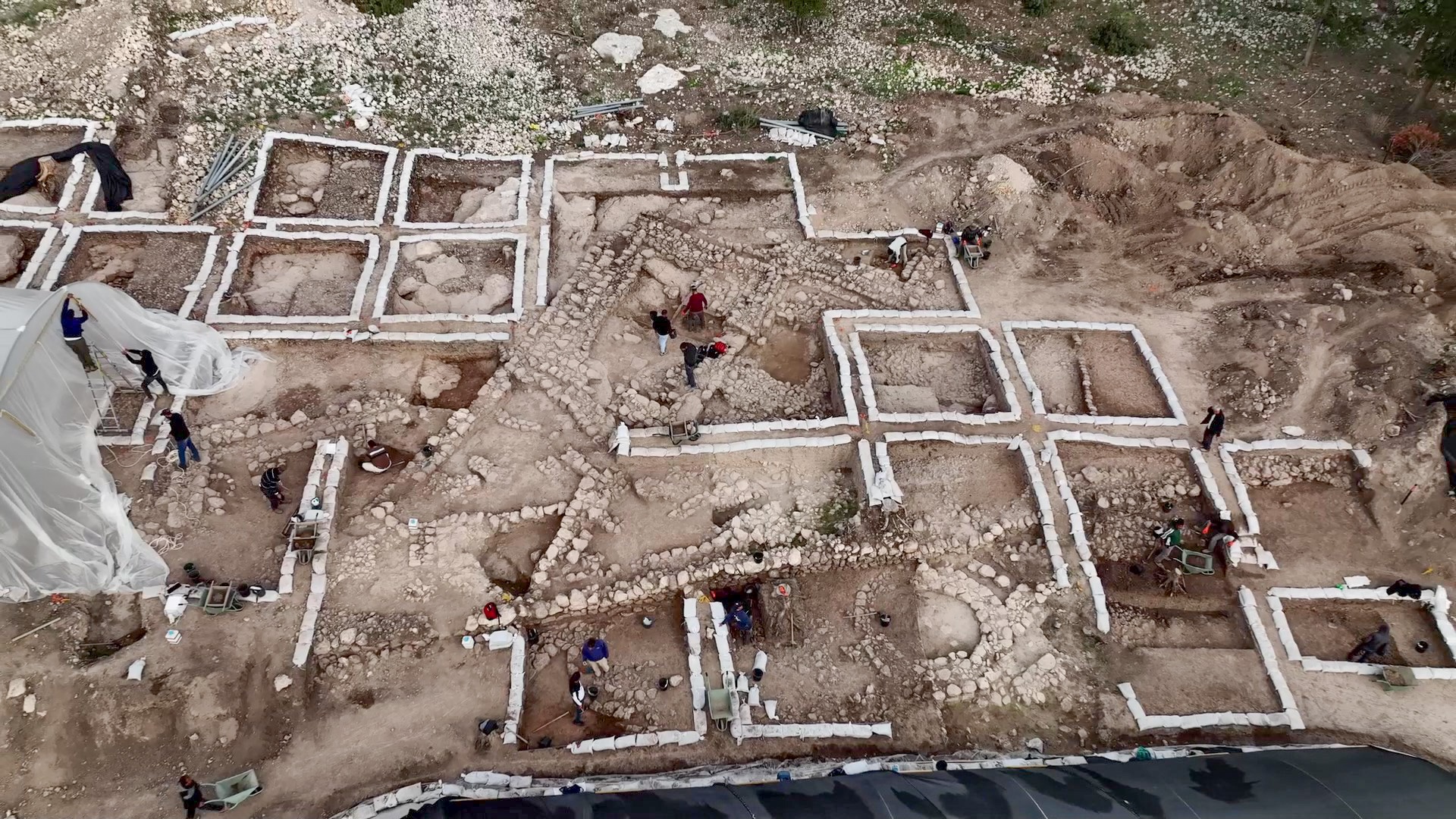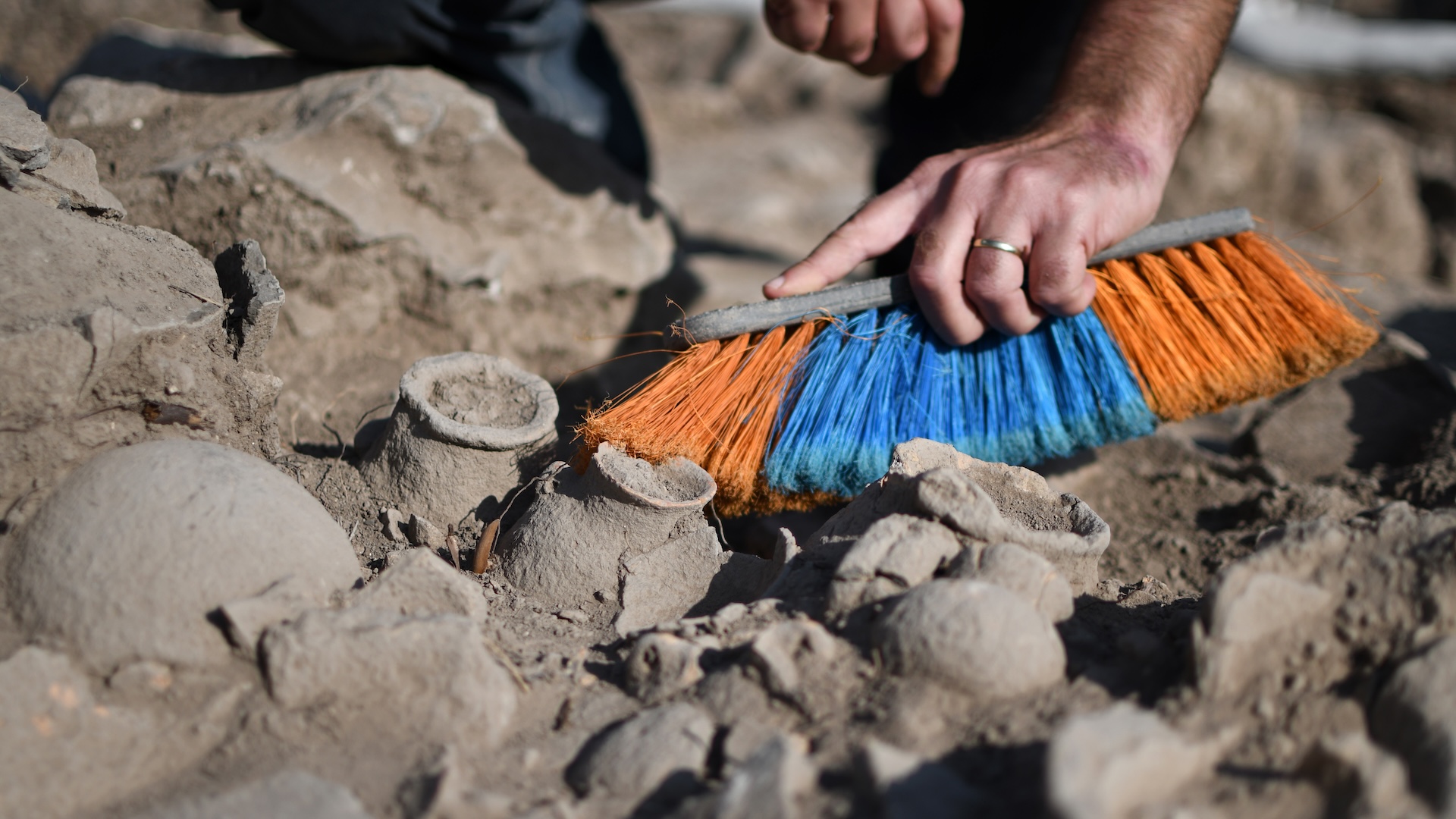
Archaeologists in Israel have uncovered a 5,000-year-old-settlement near the city of Beit Shemesh. The finds include two pottery kilns, which are among the oldest ever discovered in Israel, and a public building containing 40 intact vessels that is likely one of the oldest temples ever uncovered in the Judean Lowlands.
"The significance of the site we are working on is immense," Yitzhak Paz, a researcher with the Israel Antiquities Authority (IAA), which conducted the excavations, said in a translated video. "Among other reasons because it is a very large site that dominates its surroundings, meaning we are dealing with a substantial location that housed a large population that show early signs of urbanization."
The settlement was found at Hurvat Husham, a Bronze Age site, in 2021. The remains of the building include thick walls that housed a space with benches, which the team hypothesizes served a public function — perhaps worship, according to an IAA statement. Not far from this building, the archaeologists also uncovered an older complex with rows of large standing stones, which was likely also used as a ritual space.
The proximity of these two buildings suggests that locals transitioned from worshiping in a public area to an enclosed space with more regulated access. This could be evidence of the beginning of increased social complexity as well as urbanization of the people living in the region 5,000 years ago, the researchers wrote in the statement. They noted that the Early Bronze Age (the end of the fourth millennium B.C.) was a complex period for the region that saw an increase in population, the creation of a hierarchical society, the standardization of various industries, the construction of monumental public buildings and substantial commercial trade with neighbors.
"It's truly mind-blowing to uncover something that has remained untouched for 5,000 years," Danny Benayoun, an archaeologist at Israel Antiquities Authority who took part in the excavation, said in the translated video.

The excavations revealed numerous pots and jugs, as well as small vessels that were likely symbolic rather than practical containers. Interestingly, the archaeologists found them in their original place, likely deposited there by the residents of the settlement shortly before the site was abandoned, according to the statement. The archaeologists don't know what happened to the room after the vessels were deposited, but they found evidence of burning, and some of the vessels had fallen on top of each other. They are hopeful that further analysis of the vessels' original contents might shed light on this mystery.
The findings were presented at the 17th Discoveries in the Archaeology of Jerusalem and its Surroundings Conference on Oct. 30 and 31.






